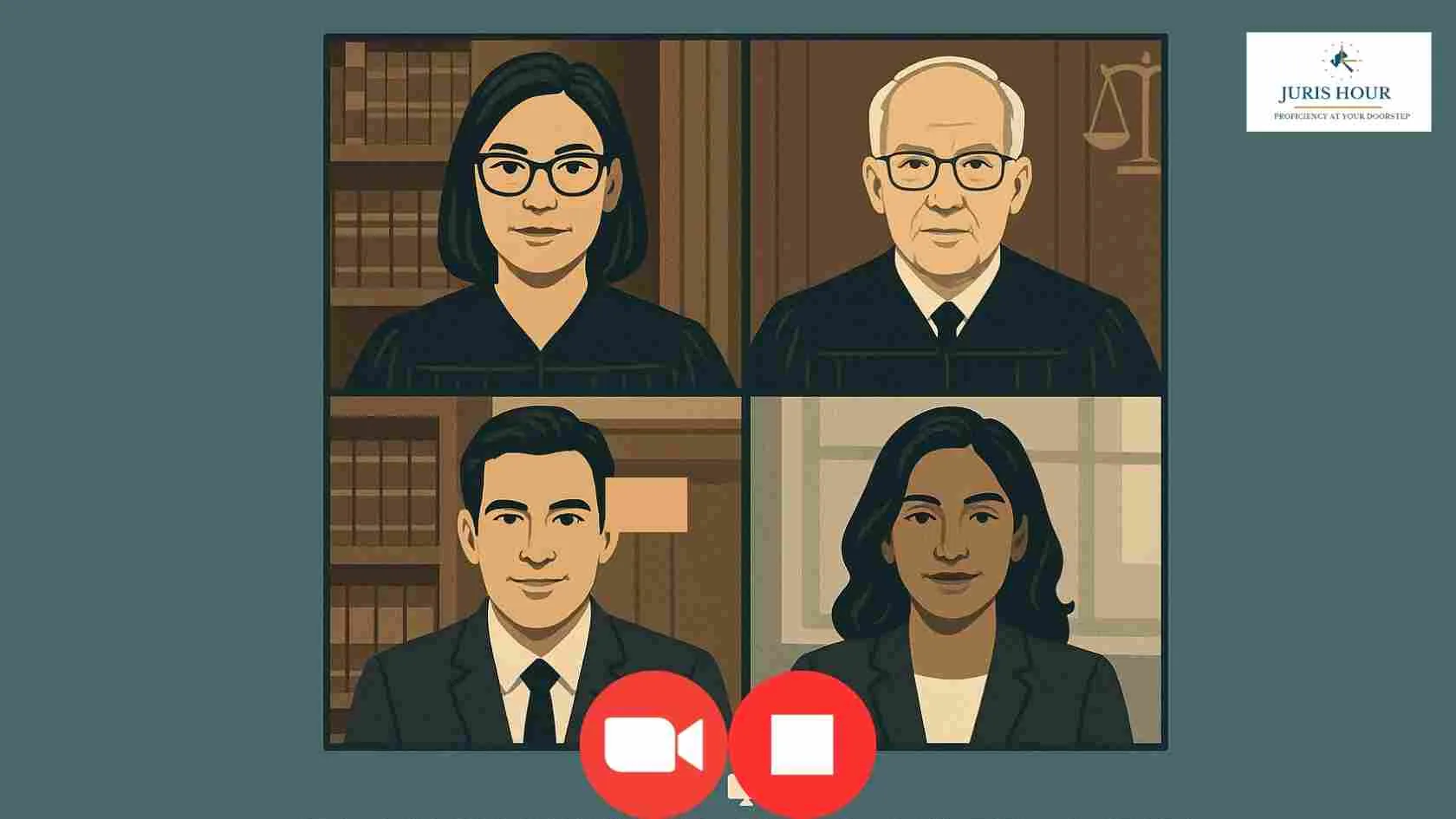The Delhi High Court has formally notified the Electronic Evidence and Video Conferencing Rules, 2025.
The rules pave the way for an integrated and secure framework for conducting legal proceedings through electronic means — including the recording of evidence, witness depositions, and remote hearings via video conferencing.
The rules are framed under the powers conferred by Articles 225 and 227 of the Constitution, the Delhi High Court Act, 1966, and the newly enacted Bharatiya Nagarik Suraksha Sanhita (BNSS), 2023 and Bharatiya Sakshya Adhiniyam, 2023. They apply to the Delhi High Court and all district courts under its jurisdiction, covering pending as well as new judicial, quasi-judicial, and arbitration proceedings.
Key Features of the 2025 Rules
- Recognition of Electronic Communication: The use of audio-visual electronic methods in all stages of proceedings—including trials, inquiries, appeals, evidence recording, and witness examination—has been granted full legal sanction.
- Wide Scope of Video Conferencing: Under BNSS sections such as 530, 154, 355, and 187, accused persons, complainants, and witnesses can now appear virtually, subject to conditions laid out by the court.
- Admissibility and Validity of Electronic Evidence: The rules recognize electronically recorded witness statements, police officer depositions, and expert testimonies as valid procedural components in both civil and criminal trials.
- Live Link Appearances: Provision has been made for “live link” attendance from designated “remote points,” including police stations, jails, forensic labs, embassies, and other government-authorized institutions.
- Approved Technology and Infrastructure: Courts must use government-approved video conferencing platforms that offer end-to-end encryption, multi-user capability, whiteboarding tools, and cross-platform functionality (Windows, iOS, Linux, etc.). Each courtroom is to be equipped with dedicated internet, HD cameras, microphones, and recording systems.
- Roles of Coordinators and Stakeholders: Every video conferencing session will involve a designated coordinator at both the court and remote location to ensure identity verification, procedural integrity, and technical compliance. Special provisions exist for differently-abled witnesses, juvenile homes, women’s shelters, and medical facilities.
- Authentication of Depositions: Mechanisms for digital and scanned signature authentication of testimonies have been laid out, including secure email transmission, hard copy printing, and document digitization where necessary.
- Open Justice and Public Access: In non-confidential hearings, the public can be given access through publicly shared links. However, unauthorized recording or rebroadcasting of such proceedings is strictly prohibited.
- Remand and Custody Hearings: As per BNSS Section 187, courts are permitted to conduct remand hearings via video conferencing, excluding the first physical appearance which remains mandatory.
- Discretionary Powers and Exceptions: Courts retain the power to allow or deny video appearances based on effective delivery of justice and may exempt individuals from physical attendance in case of illness or disproportionate hardship.
A Step Towards Efficient Justice Delivery
Legal experts believe that these rules will enhance the efficiency of the judiciary, reduce logistical burdens, and make court processes more accessible and transparent. The provision for digital authentication, real-time coordination, and technical support addresses long-standing concerns over the reliability of virtual courtrooms.
Conclusion
The Electronic Evidence and Video Conferencing Rules, 2025 represent a milestone in judicial reform aligned with India’s Digital Justice mission. As the legal fraternity prepares to adopt these measures, it signals a tectonic shift in courtroom protocol—one that balances tradition with technological innovation.
Notification Details
Date: 4th July, 2025
Read More: Antimony Imports into U.S. Surge Despite Chinese Restrictions

